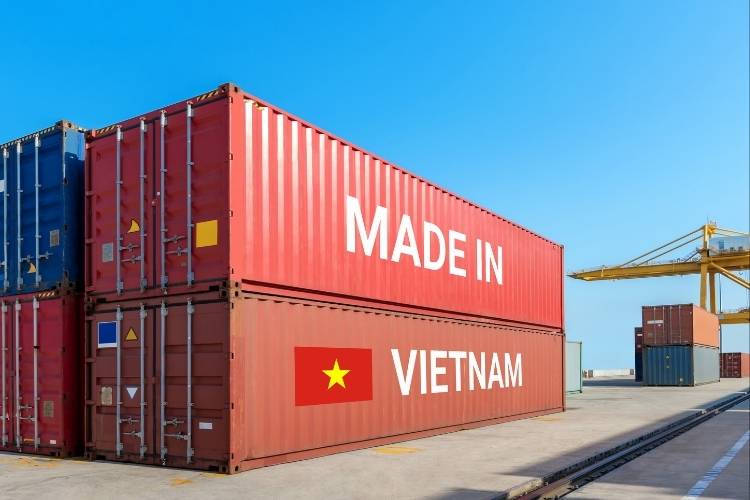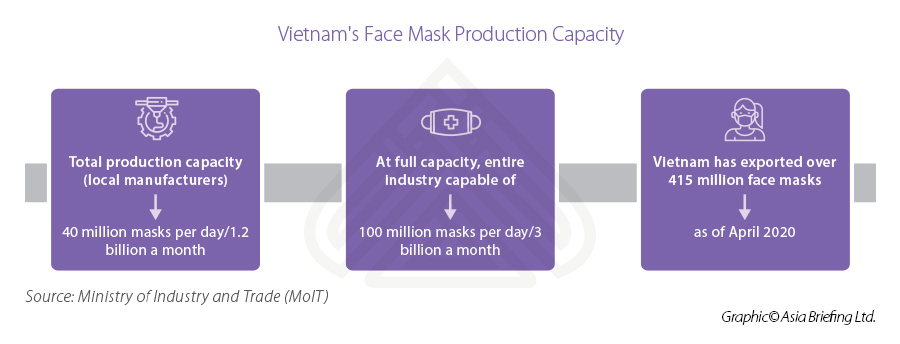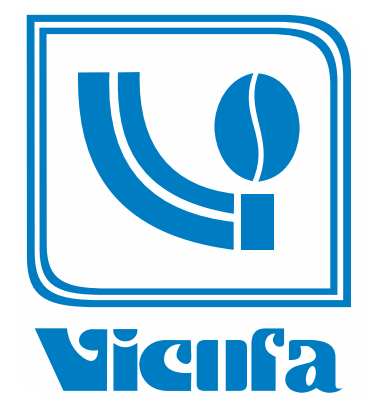
Forecast Of The Textile And Garments Industry In Vietnam 2021-2022
The Textile and Garments industry plays a very significant role in each country's economic development. In this very competitive industry, Vietnam is amidst the top textile producing countries and garment exporters in the world, so much so that in recent years the trade contributed to 16% of Vietnam's total GDP. This amongst many other factors is now proving that Vietnam can be seen as an emerging and profitable alternative to other competitors such as China.
Throughout the pandemic, many countries faced a loss in the textile and garments sector due to the contraction of exports. However, Vietnam only endured a 10.5% decrease, profiting in $35 billion which is in major contrast to regional rivals that encountered a loss of up to 15-20%. This alone is a vast indicator to the strength of Vietnam's modernized, specialized and high-quality approach to garment and textile production which even through a global pandemic managed to uphold many downfalls.
What are the subsectors of Vietnam garment industry?
There are 3 main sub-sectors to Vietnam’s garment and textile industry that include the upstream sector (fiber production), the midstream sector (fabric production and dyeing) and the downstream sector (garment manufacturing).
The sub-sectors that produce fibers or fabric, mainly known as the upstream sector, are mainly used for domestic consumption due to the fact that they are of lower quality. However, the downstream sector of garment manufacturing accounts for around 70% of the total textile and apparel sector in Vietnam. This is through CMT, also known as Cut-Make-Trim, being the main activities, which contribute to this being such a factor.

Growth of the industry
The investment potential of the industry is significantly increased due to the many FTAs that Vietnam plays a part in, agreements such as the EVFTA hold benefits with 0% import tax as well as opening up doors to many more connections which helps play a sizable part in the development of Vietnam’s growing market. In addition to this, the $39billion turnover which is expected this year is helped through such FTAs which also allow local businesses to expand to further markets and related sectors.
>> How logistics enhance Vietnam's textile and garment industry’s advantages?
Government support
Prior to the pandemic, the government had made priorities to stimulate industries such as textiles in hopes of economic growth. This was planned to be done through expanding industrial parks as well as connecting local manufacturers with more developed partners with the aim of heightening their chances of becoming a part of the industry's global supply chain.
The government also aimed to stimulate 900 firms in various supporting industries with hopes of at least 400 of them being at international standards. The MoF or Ministry Of Finance has also stated that there will be an extension on the list of import tax exemptions for items such as raw materials, various supplies and components for processing and manufacturing export products. This further promotes the promising evolution and expansion of Vietnam’s garment and textiles industry in the future years to come.
Progression through the pandemic
The progressive and modern approach that Vietnam has to the textiles and garment industry responded well to the ongoing issue of COVID19 by changing its objective of apparel production.
The industry shifted its production of conventional clothing to the much-needed personal protective equipment otherwise known as PPE.
The fast-paced ethic of Vietnam’s industry meant that by the end of April over 415 million face masks had been exported. The local manufacturing business also has a total production of 40 million masks per day and therefore averaging at around 1.2 billion masks per month. However, with full capacity, the sector can produce up to 100 million masks per day or 3 billion a month.

The demand that Vietnam can meet proves that in the face of a pandemic Vietnam can still hold its own, so much so that the success of PPE products from many manufacturers is now being seen as a profitable business opportunity. The immediate response to provide and manufacturer PPE as a counter to the pandemic is now looking like a medium to longer-term venture in trade for many, this also allows emerging manufacturers new opportunities to contribute to the much-needed Global PPE supply chain, therefore further boosting Vietnam’s textile and garments industry in which is looking even more promising for the future.
>> Read more: The COVID Impact To Garment And Textile Industry In Asian Countries

National Brand Program
The industry's post-pandemic recovery has the likelihood of high success through the governmental approval of a national brand image program. This program aims to develop Vietnam's image as a country of high-quality products and services, this will help to increase the attraction of Vietnam as a country as well as contribute to boosting international trade and national competitiveness.
The aim of the program is to increase the number of top brands in the world's renowned rating organization by 10%, all products which are recognized as Vietnam’s National brands will then be advertised inland as well as in key export markets. This will greatly help to boost the textile industry and allow Vietnam to continue on the upper hand it has on competitors, as well as persist with its growth and development as an important member of the world's textile and garment sector.
Conclusion
Overall, the forecast and outlook on Vietnam’s textile and garments throughout 2021 look to be promising despite a drastic but temporary setback through the pandemic. The industry's fast response, paired with the governmental support and policies shows that Vietnam will continue to develop strongly.
The continued and predicted rise of the garments industry is also helped through the enhancements from the government on certain sectors, especially with the introduction of new plans and programs to connect Vietnam to a wider market. International agreements alongside Vietnam’s modern and specialized outlook on garment development and position in today's society show that there is no wonder the industry has and will remain to be an increasingly important role in the economic growth and success of Vietnam.
Related posts:
Textile And Garment Industry’s Global Supply Chain
Report on Vietnam Garment and Textile Industry & Its Challenges






